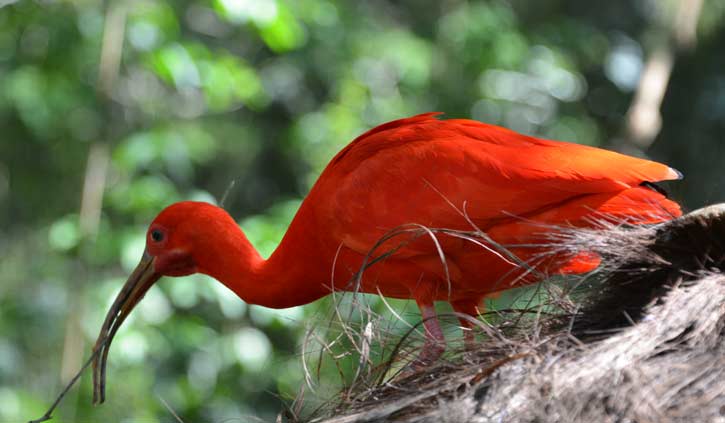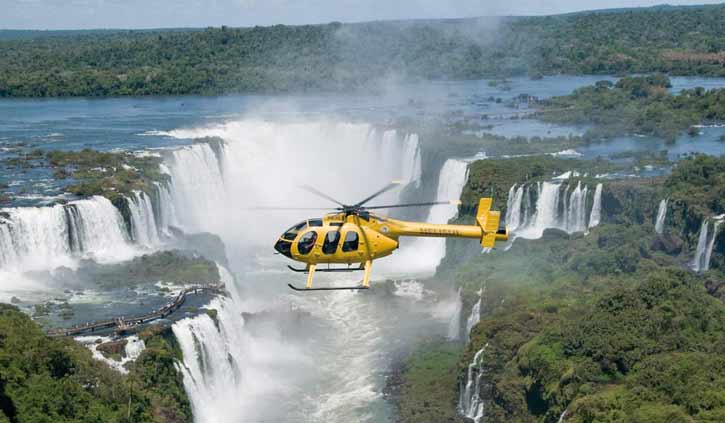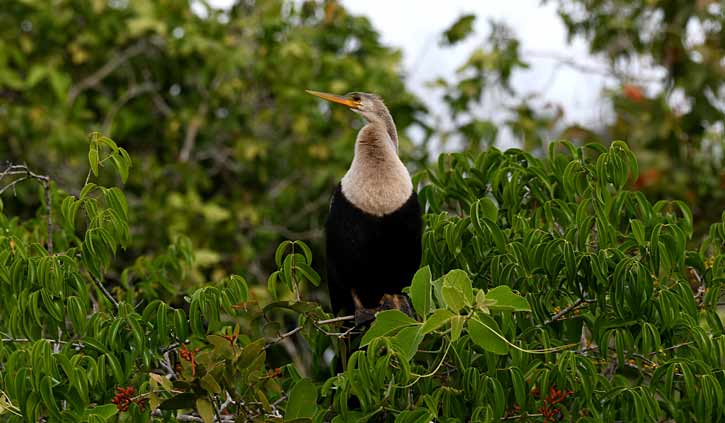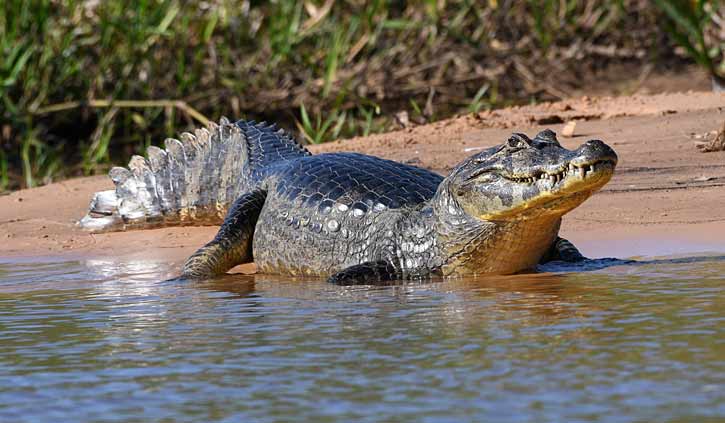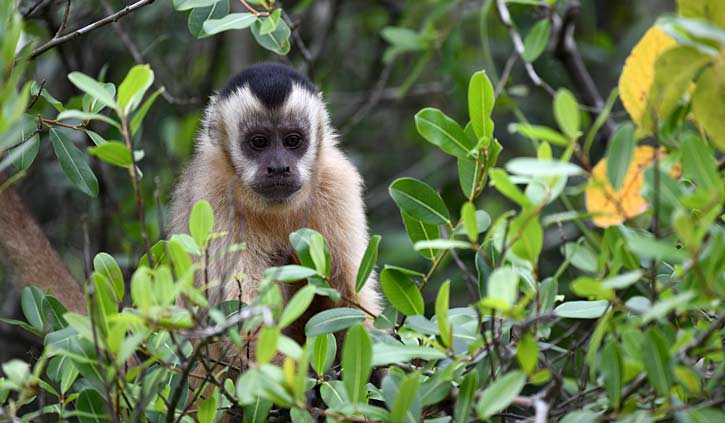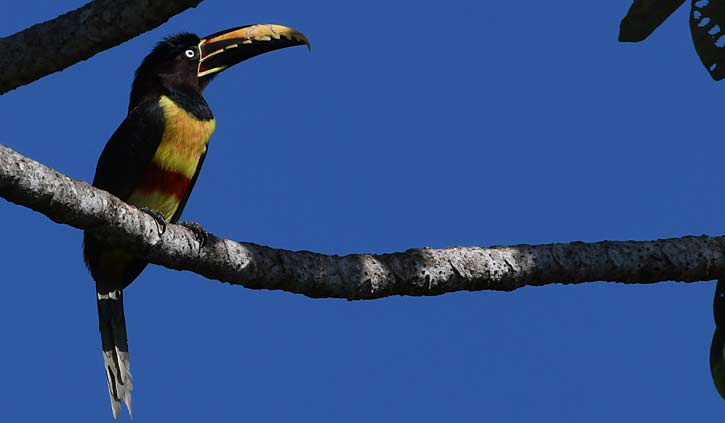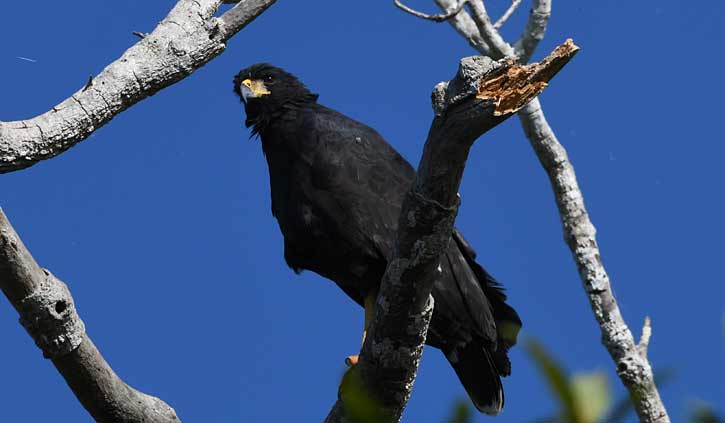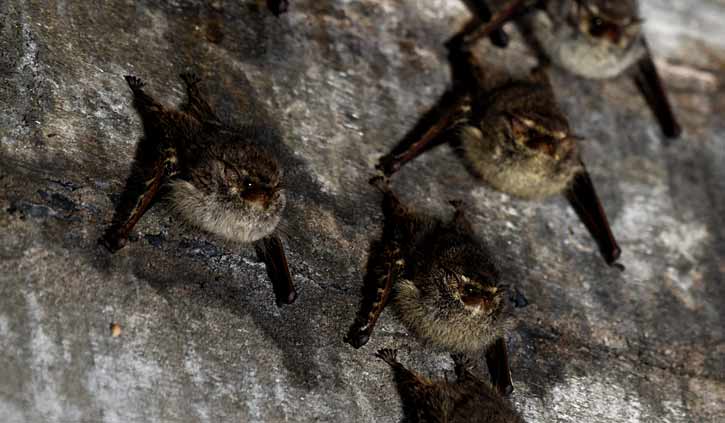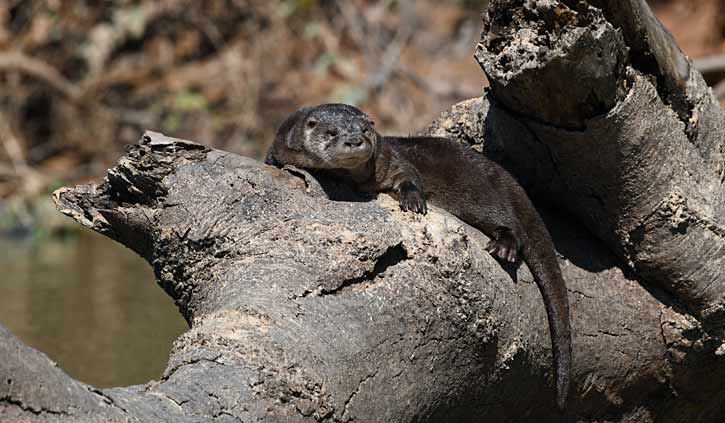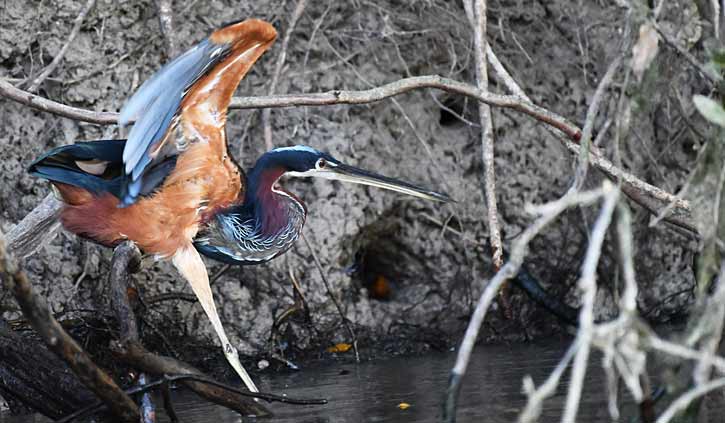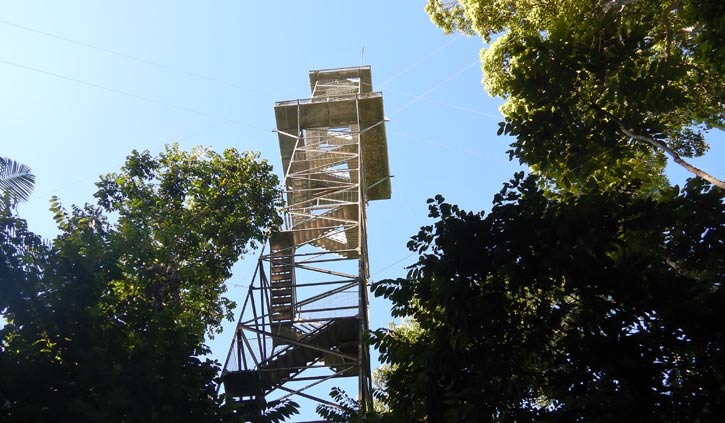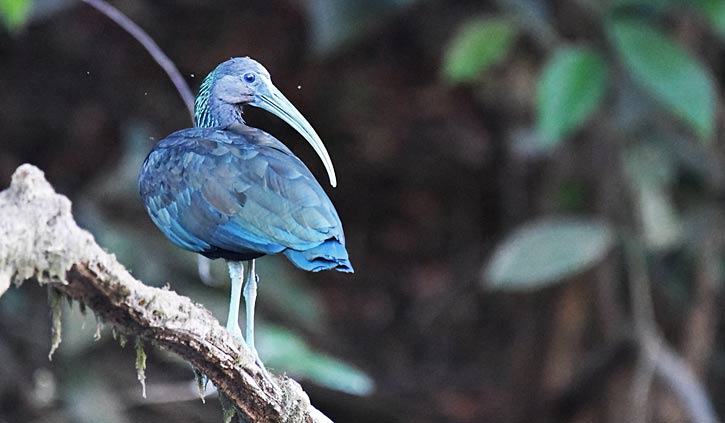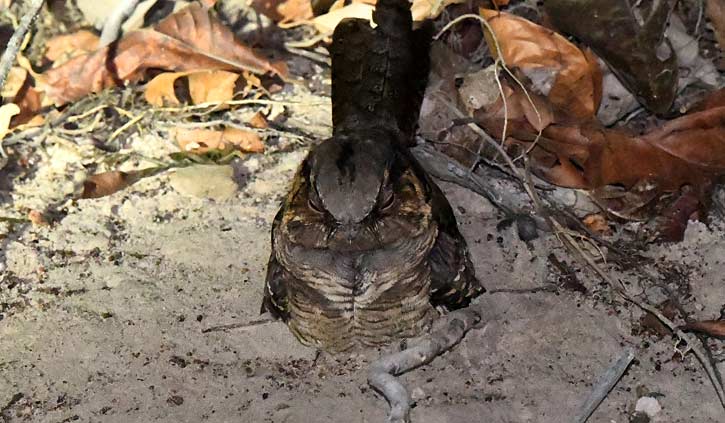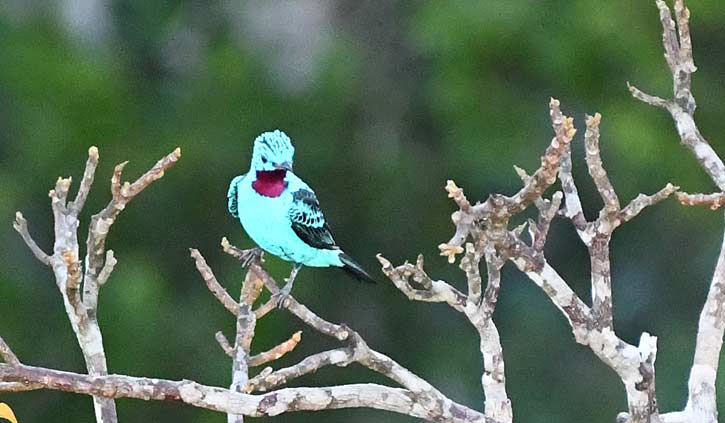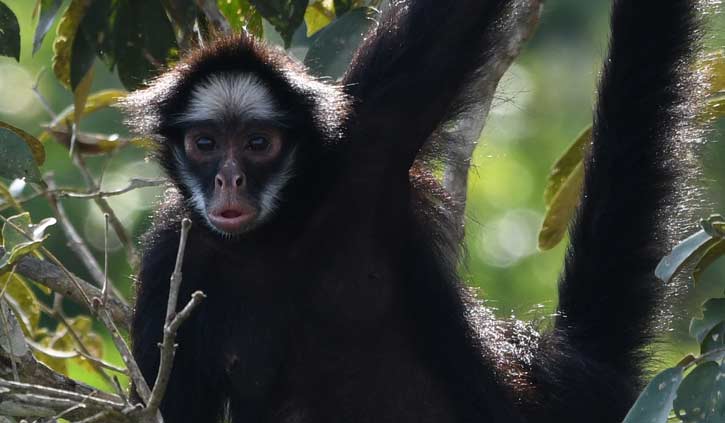02 Aug The Best Places to see Brazil’s Wildlife
The Best Places to see Brazil’s Wildlife
Alex Burridge – MD South America Travel Centre
The Amazon is likely the first wildlife destination that people think of in Brazil and I’d suggest that the Pantanal offers more opportunities to view many of Latin America’s most beautiful animals and is easily the best place to go looking for Jaguars.
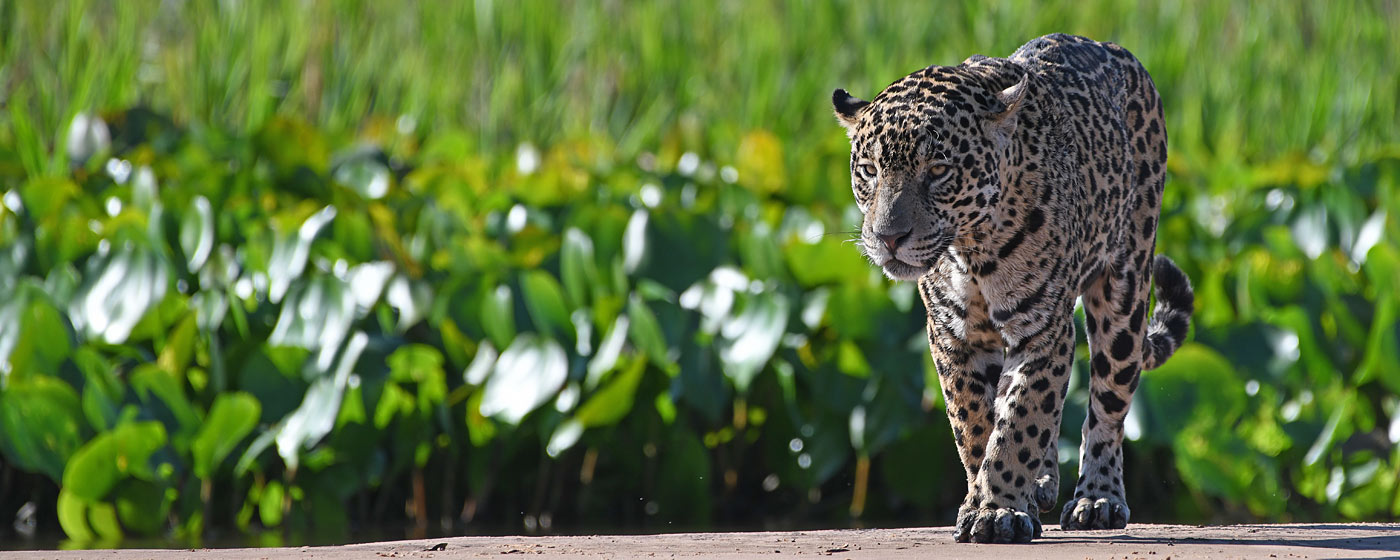
THE PANTANAL
Cuiaba is the main gateway to the Pantanal which is a massive wetland area that covers an area of over 180,000 km2. Just over an hour from Cuiaba and you’ll find the small town of Poconé. It’s here that the 147km Transpanateria Road to Porto Jofre commences, almost immediately the Pantanal’s wildlife can be seen either side of the dirt road built in the 1970s with 122 mostly wooden bridges (new concrete bridges are slowly replacing them).
During my recent visit to the Pantanal within minutes of departing Poconé we were fortunate to see a giant anteater. Apparently this is not too common as our guide said it’s the second he’d seen that year and he’s a frequent visitor. Whilst admiring the Giant Anteater two Hyacinth Macaws wheel overhead. Over the next hour we saw Jabiru storks, several species of egret and heron and perhaps another 40 species of bird – all of which our guide Lailson easily recognises.
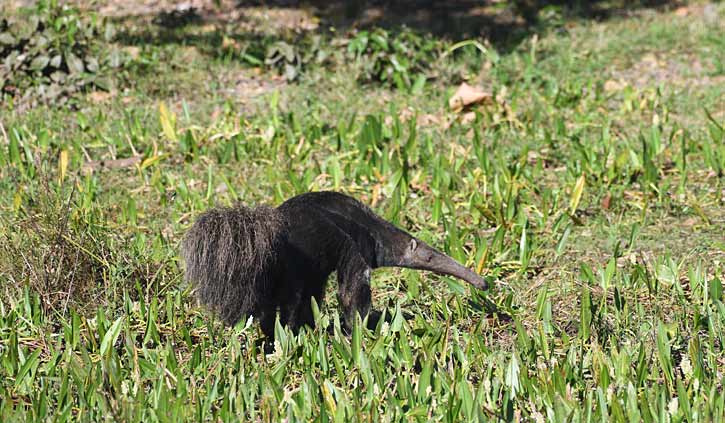
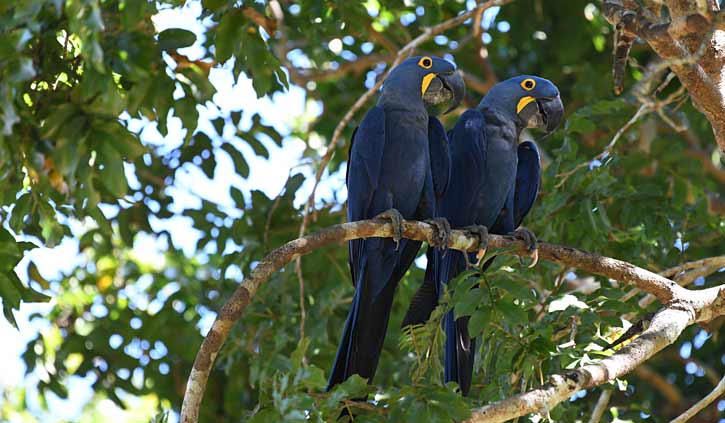
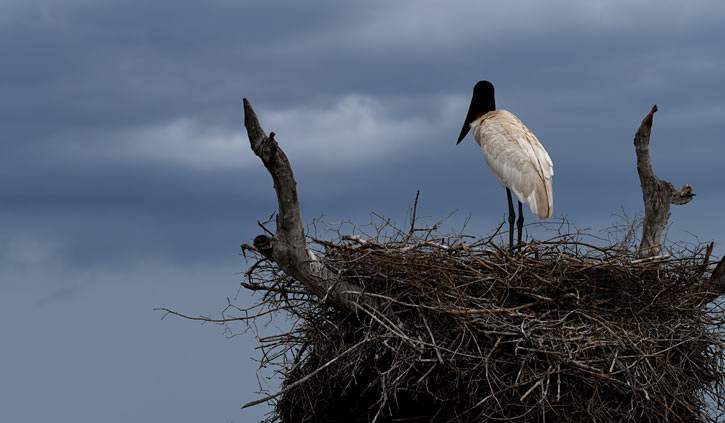
Where to Stay
The region has several lodges or converted farms that offer comfortable accommodation as your base whilst you discover the Pantanal. I stayed at the Fezanda Santa Tereza (Southwild Pantanal) that was previously a farm which has been converted into a lodge and is set right next to the Pixiam River where most of the wildlife in the Pantanal will be seen. The accommodation is simple and comfortable; air-conditioned rooms, hot water and mosquito nets over the beds, with hammocks outside the rooms. The food is tasty wholesome Brazilian fair.
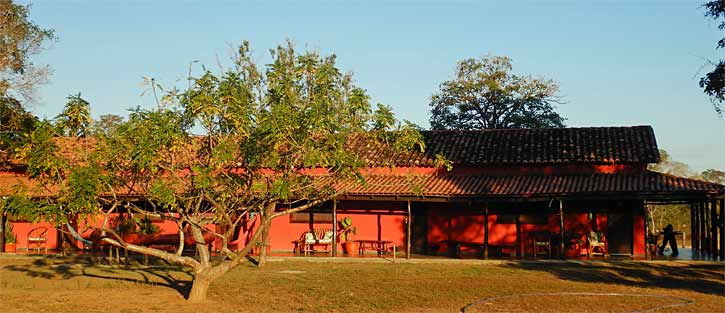
The highlights of a stay at the Fazenda are the boat trips along the Pixiam river in search of many species of birds and both Giant and neotropical otters with our guide. I’m not a twitcher (very serious birdwatcher) but I do like to know what I am looking at. Over the three days I saw well over 100 different species including ringed and Amazonia kingfisher. The farm also has a tower constructed close to a Jabiru stork nest.
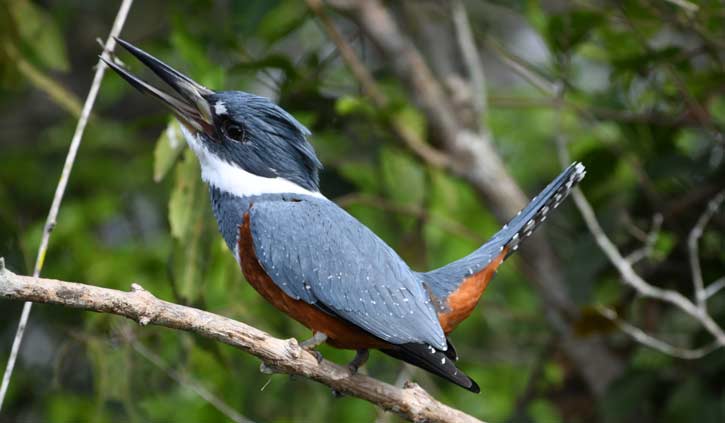
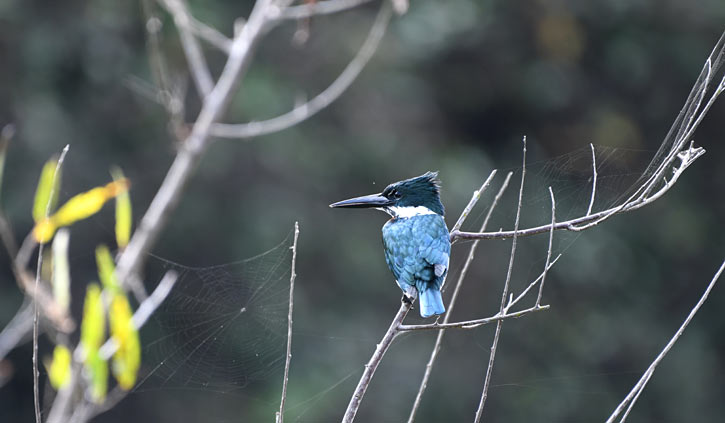
Must Do Excursions
Two exceptional experiences that have been developed over several years are:
The Ocelot Encounter and The Tapir Experience
Both of these amazing animals have been habituated to guests at the farm. Each night the ocelots are tempted with chicken feet and a Brazilian tapir with mango. Small stands have been built to accommodate guests who can watch these otherwise difficult to see animals. The night I was there three ocelots visited – two males and one female. Our guide explained that one female tapir visits most nights to enjoy mouth-watering treats. On this evening she wandered close to the stand quite clearly unperturbed by our presence. Photography is facilitated by spotlights. Remarkably the stands are built within a few minutes’ walk of the farm house. Soon we were back enjoying a wholesome dinner and discussing the days numerous sightings. For me seeing the tapir was wonderful – I had previously spent hours in complete darkness at a salt lick in Peru’s Manu National Park hoping to spot a tapir so to see one in the Pantanal was even more special. Staying at the farm for three nights offers two full days of exploring, as well as potentially three opportunities to see the Ocelots or Tapir.
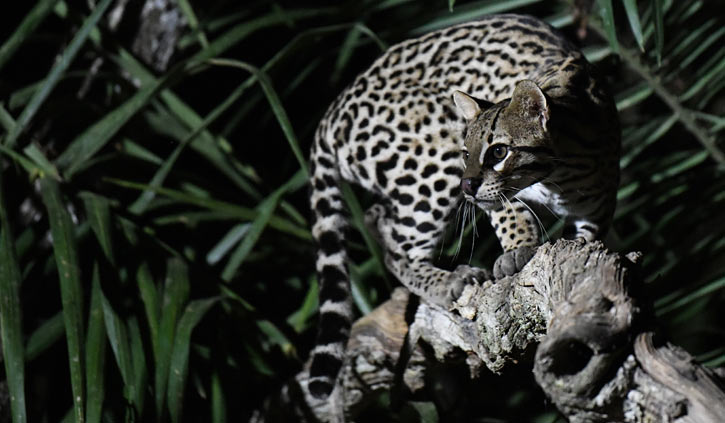
Ocelot
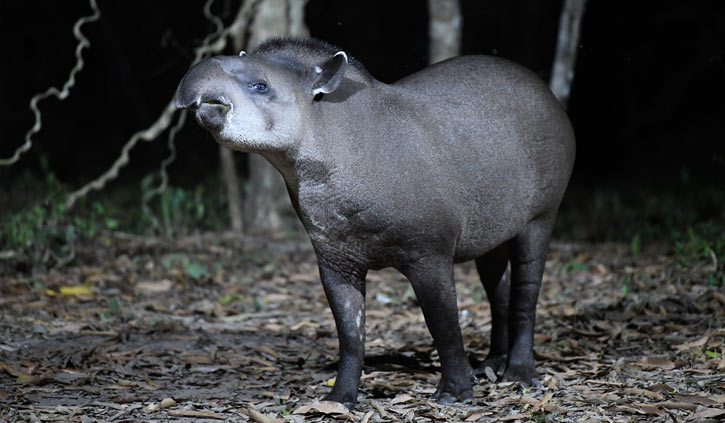
Tapir
Pantanal Jaguars
Jaguars are found throughout South & Central America and even into the southern states of North America yet they are very rarely seen. Manu National Park in Peru is one option to try to see these elusive and dignified creatures – the Pantanal is the other.
2-3 hours further down the Transpanateria Road from Fezanda Santa Tereza is the small town of Porto Jofre. From there, a further half an hour by boat, is the Jaguar Suites – a floating hotel, or flotel – located on the side of the river. The Jaguar Suites offer two types of room, 12 very comfortable and air-conditioned en-suite rooms with floor to ceiling views of the Piquiri River and forest, as well as 10 more simple rooms.
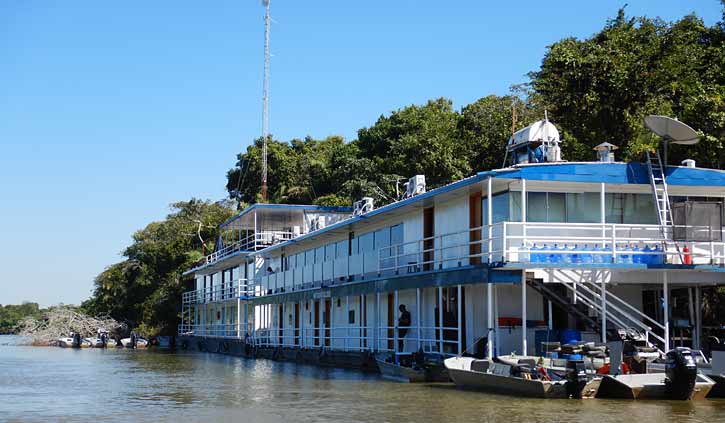
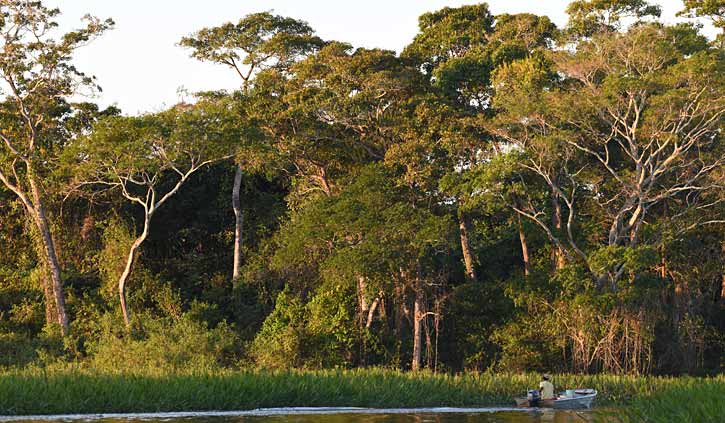
After arriving at Jaguar Suites I quickly checked in to the unique accommodation then set off with my guide down the Three Brothers River and its smaller tributaries (Black Channel) searching for Jaguars. Several boats joined our search; which was both a positive and a negative; positive as there were more eyes searching, negative as when a Jaguar is spotted it’s likely several other boats will appear. We received a radio message and our speed changed from sedate cruising to skipping across the top of the water and within minutes we saw our first Jaguar.
Over the next three days I had 15 sightings of 7 different jaguars. A couple of these sightings we were the only boat. Jaguars are identified by their individual pattern on their face, 143 different jaguars have been identified in this region over the last 11 years.
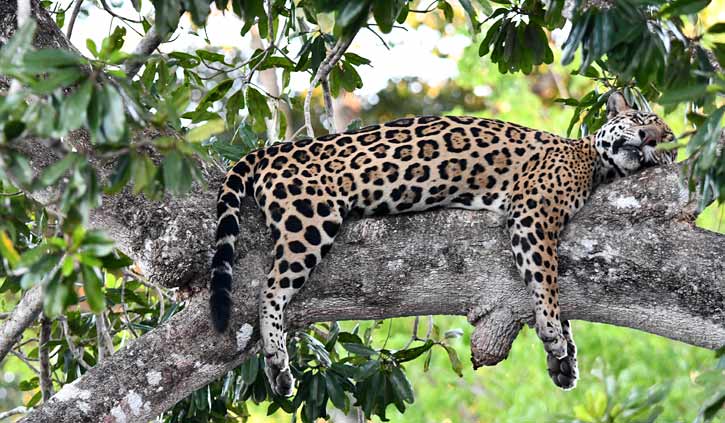
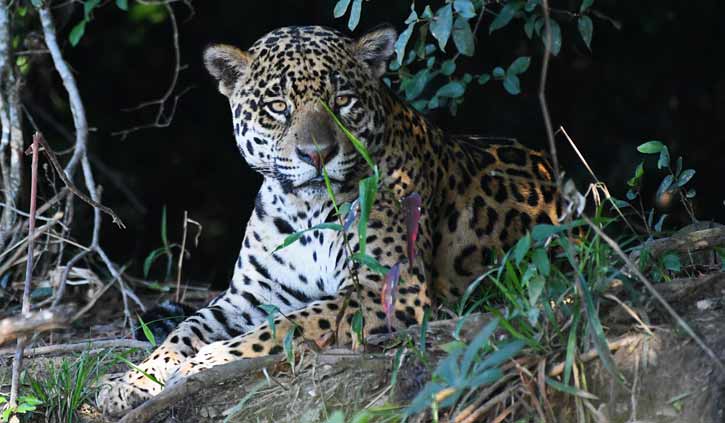
One experience I will never forget we were sat watching a ‘courting’ couple of Jaguars when three Giant Otters appeared in the river a few metres away, spy hopping. The otters began barking at the male jaguar and he was obviously not happy, snarling back at the otters, which eventually seemed to lose interest and swim away. But in actual fact they had gone to collect 2 more of their family members and all 5 giant otters returned, seemingly, to harass the jaguars. Having made it clear they live there too the otters head off and are soon relaxing eating fish nearby to our boats. It felt like we were in a David Attenborough documentary!
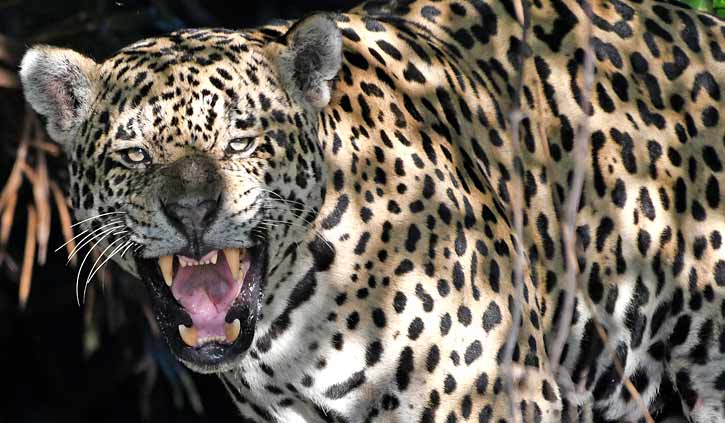
It’s not only Jaguars that you’ll see here, giant otters are also commonly spotted (as well as Caiman, brown capuchins, black howler and on rare occasions Brazilian Tapir (though I don’t see one). Occasionally you’ll get to see giant otters and jaguars at the same time and it appears they are not the best of friends. Perhaps the local Tupi word for Giant Otter ari’raña, meaning ‘water jaguar’, gives some clue as to why and that the otters are not intimidated by the much larger ‘land Jaguar’.
Brazil’s Amazon
The Amazon in Brazil covers a massive, albeit shrinking, area of perhaps 5,000,000 km2. I didn’t head as far north as Manaus which is the main gateway to Brazil’s Amazon Rainforest, I did however venture to the Southern Amazon to Cristalino Private National Heritage Reserve which borders the Cristalino State Park which despite its status is being eroded by farms on its southern border.
Owners of the private reserve built the fabulous Cristalino Lodge, which has twelve very comfortable suites & bungalows. Solar power provides hot water and self-service buffet style meals are produced by the Cristalino kitchen which gives preference to local products that are in season. Organically grown fruits and vegetables from a small farm just outside the reserve, fresh fish and a variety of meats ensure you are well looked after during a stay here.
The Cristalino Lodge offers and wide range of activities that can be tailored to your interest and time at the Lodge. There are several trails through the varied habits within the Reserve – unlike true Amazon rainforest which is flat and is all forest this reserve has many hills, massive granite boulders and seven different forest habitats. There are two 50 metre Canopy Towers with lookout levels at 30 metres (in the canopy) and 50 metres (above the canopy). I have to admit to feeling a little more secure at 30 metres.
During my stay at Cristalino I explored the Cristalino River with my guide by motorised skiff (metal boat with seats) and by kayak. On my second afternoon at the lodge we were cruising up river when a large object disappeared under the water maybe 20 metres from us. A few seconds later a male Brazilian Tapir emerged and proceeded to the muddy river bank where he ate some soil (many forest animals need the minerals and salts in the soil to aid their digestion of tannin loaded leaves and fruit). Apparently this tapir was the first of this dry season and I was amazed to find out that towards the end of the dry season (late August & September) as many as 20 tapirs have been seen in the river in one day. This is due to all the smaller ponds drying up so the tapirs congregate near the river.
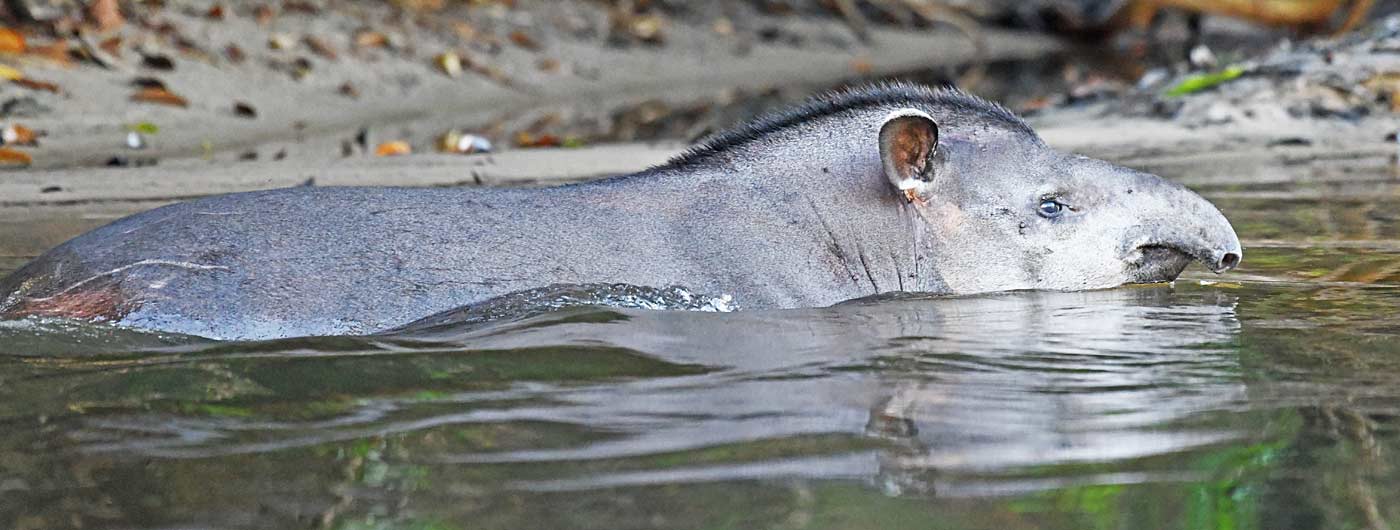
The reserve is home to over 500 species of bird, including six species of macaw (scarlet, blue-and-yellow, chestnut-fronted, red-and-green, blue-winged and red-bellied) as well as another six species of parrot. I went hoping to see spangled and pompodour cotingas (largely because of the name) as well as beautiful paradise tanager and I was fortunate to see them all. Photographing them is a challenge as the birds are small but you may be lucky enough to see them flying close to the canopy tower which does occur when the tress next to the towers have fruit.
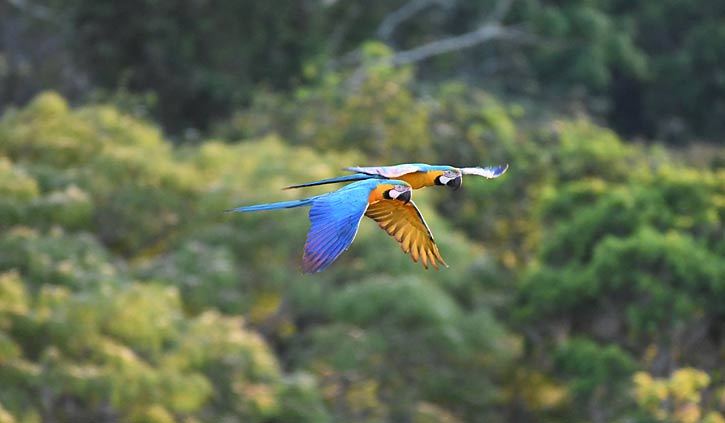
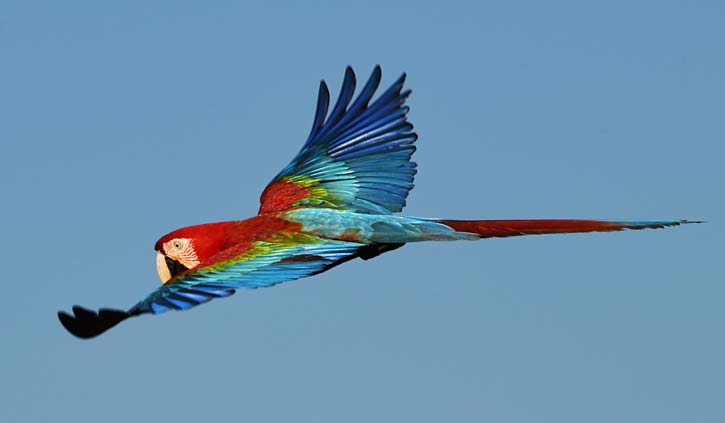
Given the towers extend above the canopy with some luck and patience it’s possible to get some great images of macaws as they travel through the forest. There are seven species of monkey in the reserve. I saw two and heard the howler monkeys. Whilst in one of the canopy towers we heard and saw a small group of white whiskered spider monkeys, perhaps 100 metres away. To my delight within a few minutes they were in the trees right next to the tower.
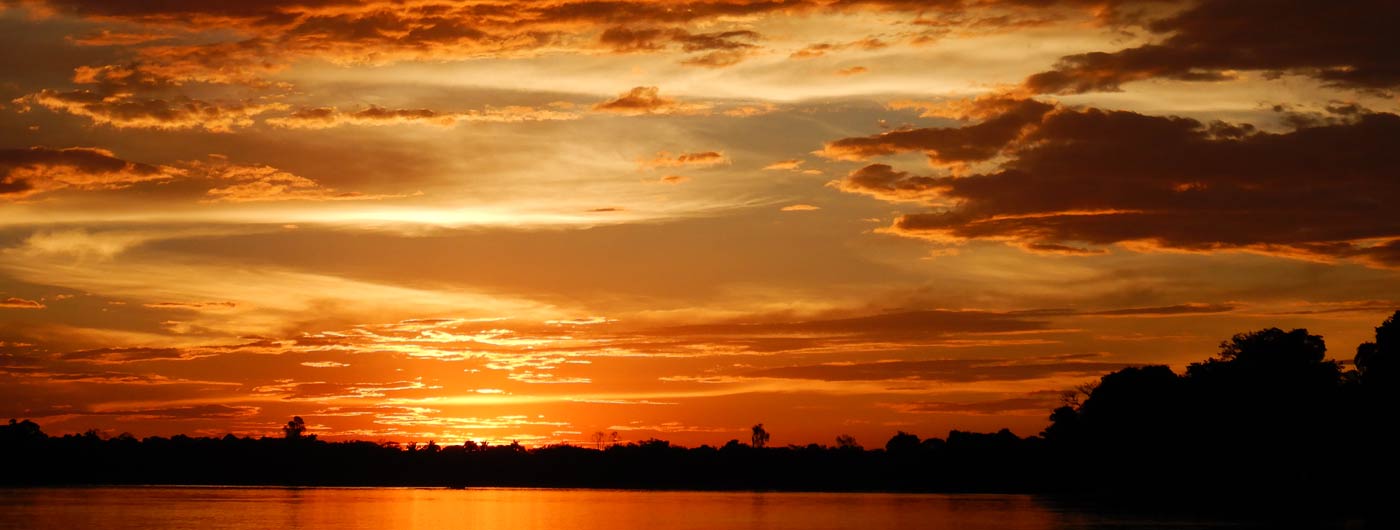
On my last afternoon we paddled kayaks (escorted at a distance by a skiff) downriver to the confluence of the cold black water of Cristalino River with the brown warm water of Teles Pires River. Here we enjoyed a magical sunset, a very fitting end to an enjoyable stay at Cristalino Lodge.
Iguassu (Iguaçu) Falls – Brazil side
When visiting Iguassu I would suggest a minimum of two nights – three if you can – which allows you to explore both the Brazilian and Argentinian sides of the falls and some time to relax. If your budget allows I recommend staying at the beautiful Belmond Das Cataratas Hotel. Whilst the hotel, its facilities and service are excellent, and what you would expect from a luxury hotel, it’s the hotels setting that is a major factor in recommending a stay here. The hotel is the only property within Iguaçu National Park and located directly opposite the falls. Given the National Park gates close at 5.30pm and don’t open until 8.30 the next morning guests staying at Das Cataratas have the falls to themselves between those hours. During my stay here I headed down to the falls at 7am and was the only person on the causeway in front of the Devil’s Throat (which sounds much better in Spanish ‘la garganta del diablo’). If you visit this spot at midday there will likely be hundreds, even thousands, of people.
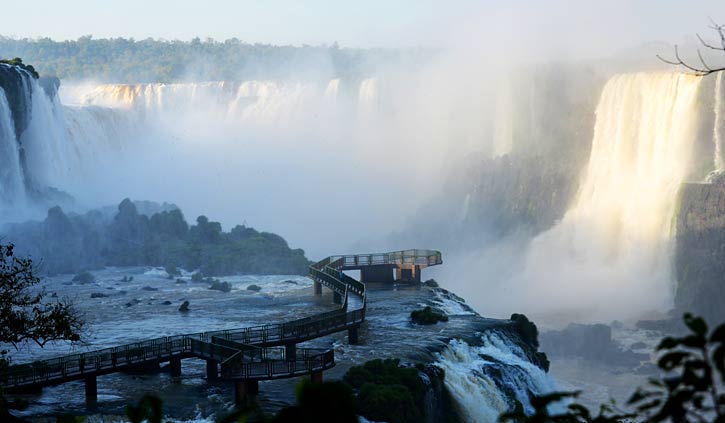
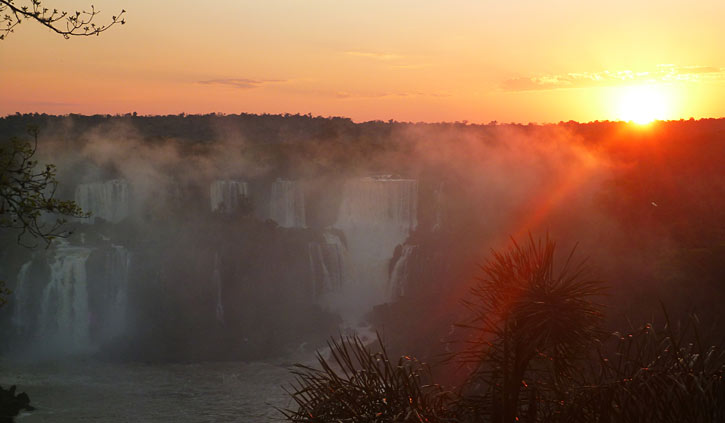
The two other worthwhile inclusions for your time at the falls are the Bird Park and a helicopter flight over the falls (which can only be booked locally as it is weather dependent and definitely taking as it is only from the air can you see the entire spectacle of the falls at one time). The Bird Park will afford you close-up views of many Amazon birds that are often either hard to find or difficult to see in as close, as is possible, to a natural setting; below you can see one of the most colourful the Scarlet Ibis (others found in the park are several species of macaw, aracari, toucan, king vulture and the largest eagle in the world the Harpy eagle).
